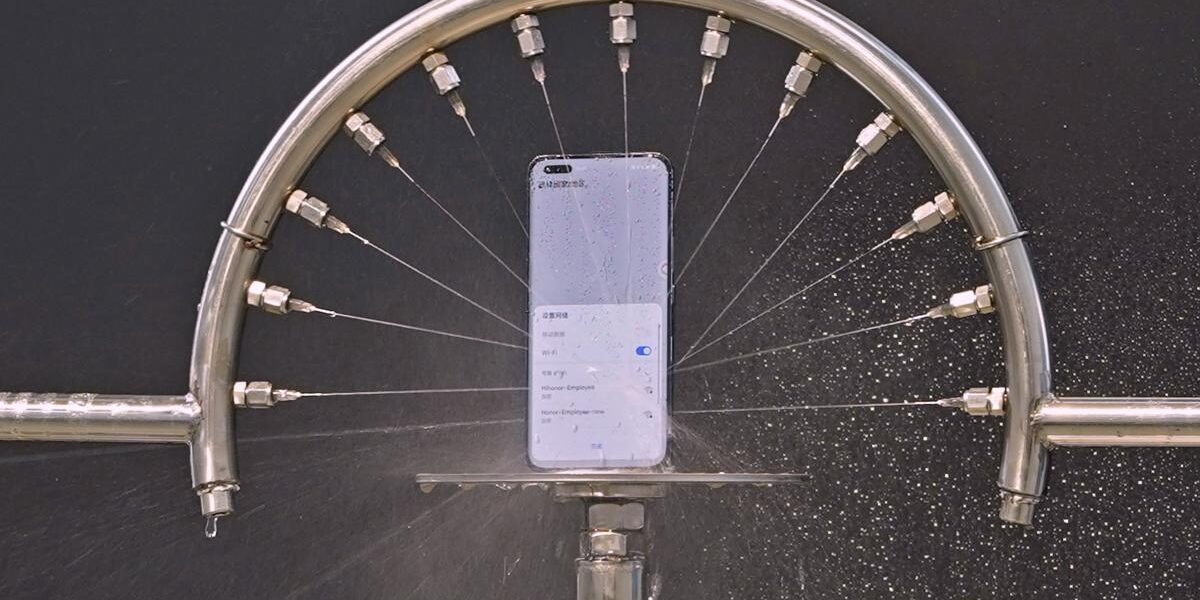Honor has a special factory that only makes its flagship phones, and we paid it a visit
Honor has a special factory that only makes its flagship phones, and we paid it a visit

Given how stifling and technical each factory tour could be, you’d assume we’d grow more numb with each new visit. Our latest jaunt to Honor’s crucibles of phones, however, proved us so wrong.
For one, Honor showed us its special Intelligent Manufacturing Industrial Park located in Shenzhen, China. When it was announced and launched in 2021, it was slated as the company’s self-funded, self-made smartphone factory specialising in only making its flagship-tier handsets. Surely, a factory like that would only have the latest, cutting-edge sciences to check out.

Secondly, the factory visit was quickly followed up with another high-value asset: Honor’s Shenzhen R&D Lab, launched in 2023. This is where the fabled smartphone research happens. New discoveries here eventually lead to improvements like better photos, battery life, and display technologies we see in smartphones today.
Naturally, having such a cool “factory + lab tour” meant plenty of restrictions. Unlike the other visits to rival factories of OPPO and Samsung phones, Honor said this tour doesn’t allow any photography, videography, or even a live smartphone for note-taking on the manufacturing or R&D floors. Documenting the visit was fascinating and painful all at once, but we made do somehow.
Without further ado:
Honor’s “flagship-only” smartphone factory

In short, this plant, which specialises in making flagship-only smartphones, meant that every corner of the floorspace could make, ensure, and control its manufacturing quality beyond what humans and artificial intelligence (AI) can achieve alone.
It has a whopping 85% automation rate, meaning only 15% of the process requires human intervention. That 15% is put to excellent use, with human specialists making sure that the automated lines do not make mistakes, and the next AI in line can also catch if the human missed something crucial.

Much of its manufacturing nature is complementary: for example, it falls upon a human to operate a dust-free room to install high-quality camera lenses onto each phone properly, but it also comes down to AI to catch little things on the assembly line, like dust as tiny as 40 microns. Not a single effort is wasted, which results in Honor being able to produce up to two flagship phones per minute on each belt.

That’s merely half the Magic of Honor’s flagship process. The brand added that it’s the only other smartphone company that uses “100%-check,” a quality assurance and control technique in which every phone is tested before being put into customers’ hands. Burn-in testing also happens relatively early in the manufacturing process.
Even the best brands do not have that luxury and would, at most, single out random units from each batch for that privilege. Honor said its adherence to conducting all necessary tests at the point of assembly has resulted in 99.97% of its phones being good to go on their first pass. Because Honor always catches the wayward devices, those that fail would be immediately put through a separate quality inspection to see if it’s a flaw in the process or the person.

Moreover, 60% of the machinery featured in the Intelligent Manufacturing Industrial Park is designed and made by Honor, making more than half its process highly proprietary, even if many steps are somewhat similar to how phones are usually made.
One highlight of our visit was spotting a DEK semiconductor printer, an assembly machine for printing best-in-class circuit boards. That in itself isn’t so noteworthy, but these printers are from ASMPT SMT Solutions (headquartered in Singapore), which illustrates how big and how small the field of global high-tech precision manufacturing truly is.

The park also conducts almost 200 tests for the materials that become phones, in addition to a few dozen tests that happen after a phone is made.
Research and development through AI and real-world simulations

The other half of the visit was to Honor’s R&D laboratory in Shenzhen, which has three main functions: simulation, basic research, and module testing in industrial software, algorithms, simulated solving, and even in new materials creation and connectivity solutions.
In short, when Honor says it has developed a new glass type for its phones or has figured out how to reduce certain connectivity flaws in its antennas, it’s typically a result of the work undertaken at this technological ground zero.

The lab’s statement piece is a server room that houses Honor’s high-performance computing platform. It’s one of the first facilities you’d walk past, and the entire place is basically a bunch of servers running AI simulations and processing mountains of data produced by this research facility. Everything, from deeper research into physics like light, heat, sound, force, and electromagnetism, to the virtual realities used to predict outcomes, is all happening here.
This server room isn’t just for show, either. Honor said that its self-created simulation solver uses heterogeneous computing (efficiently combining CPU and GPU instead of only relying on one type of processor), which helps reduce power consumption by 90% and increase computing efficiency by three times (compared to traditional simulation solving).

The rest of the lab primarily houses two main functions: a variety of testing labs for its engineers to conduct further experiments that can help improve a phone (e.g. soundproof acoustic chambers for network testing) and standard drop-tumble-wash resistance testing for newly invented phone materials. After all, it’s useless if your new theory doesn’t live up to the practical realities of phone users.

What’s also enlightening is its extensive research into eye comfort and eye care, where Honor showed us its deep discipline and research in ensuring every aspect of the human eye was considered in making its display more comfortable.
Not only can its resulting laboratories determine whether displays can meet TÜV SÜD / TÜV Rheinland certifications, but they can also respond to certification requests within 12 hours. To put their efficiency into context, it took HWZ nearly two years to get the Pro version of CapCut (TikTok’s official video editing app) after this writer submitted his request to his management.
What’s next?

Honor has already promised to invest more than US$10 billion across five years in AI development, which was also announced alongside its other MWC 2025 headliner. It’s looking to become a critical player in spearheading agentic AI, especially since it went through the trouble of declaring its friendship with Google Cloud and Qualcomm during the previous showcase in Barcelona, Spain.
Early signs Honor’s AI ambitions can already be found in the Honor Magic7 Pro (review here). However, the phone showed it’s nowhere near the level or finesse needed to overtake Samsung and even Google in creating a true mobile AI agent.
@hwztech Honor HQ Office at Shenzhen is where all the cool tech hides at. We saw what the brand is truly capable of and can’t wait to see more form factors and features come to Singapore! @Honor Singapore ♬ CLOSE MY EYES – Ki
Part of that limitation is that much of its AI advancements are exclusive to China-only Honor handsets, which we had a chance to experience at Honor’s corporate office in Shenzhen (as seen in the TikTok above). Many quality-of-life things, like AI Deepfake Detection working on online videos (beyond calls) and an Honor-made app for photo transfers to an iPhone, are either not publicly available or limited only to Mainland China, which we think is Honor’s most significant hurdle on its road to mobile AI dominance and widespread adoption.
Perhaps things will change shortly. US$10 billion in five years is no laughing matter, especially not to AI research. For now, we can accept that factory visits are illuminating if they have so much to share. It also makes it easy to understand if we pretend to be smartphones for a day.




